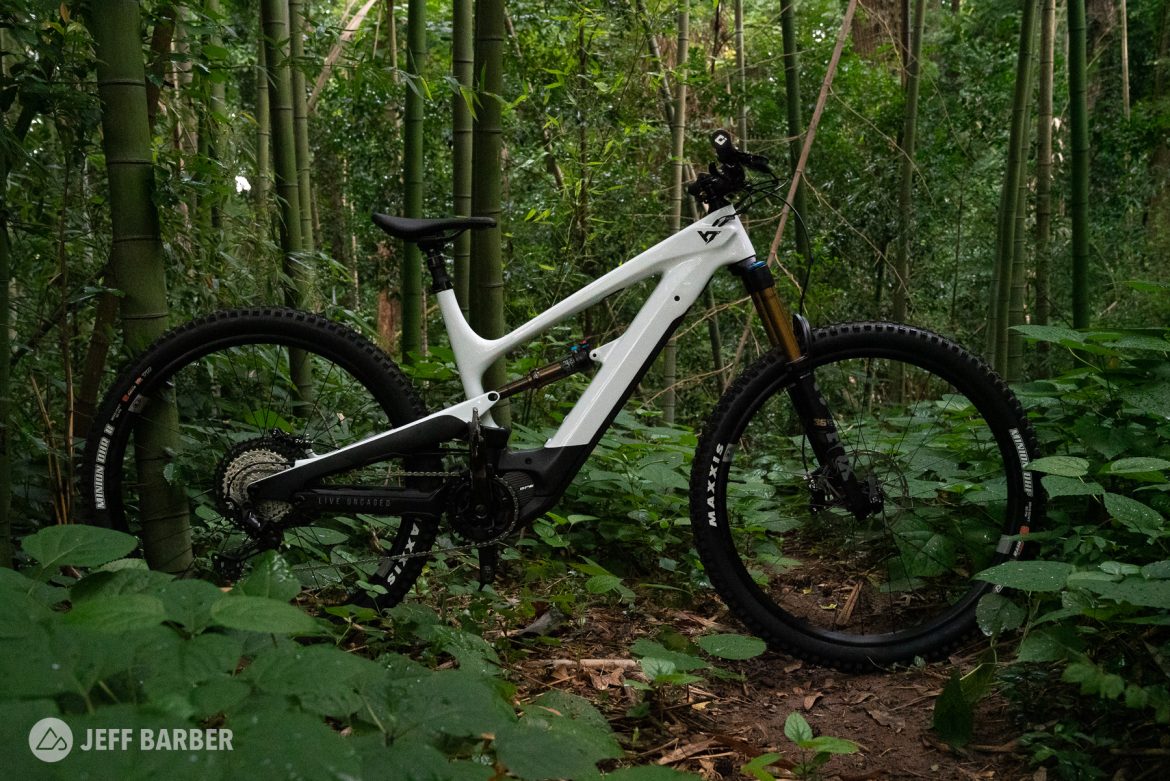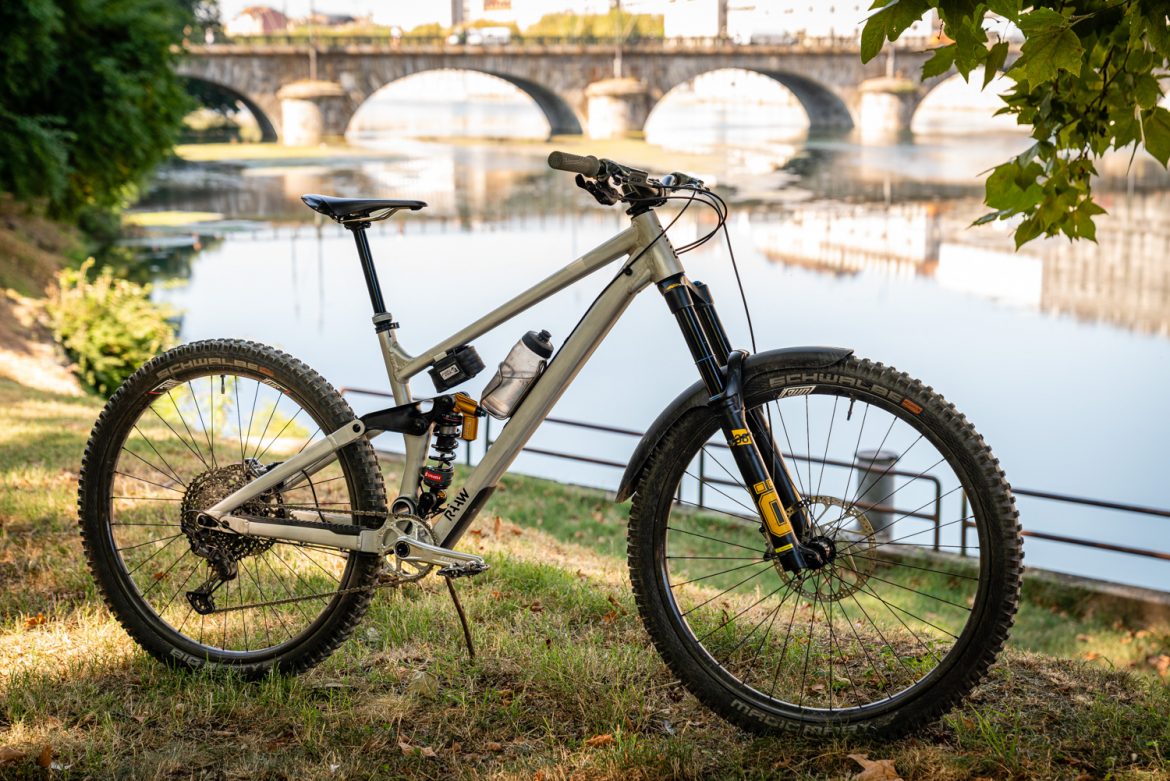
Singletracks tested an impressive and diverse set of mountain bikes in 2021. The following are the best of the best, the bikes that stood out to us from the flock of amazing 2021 test rides. While all of the bikes we tested this season will work well for someone, there are always a few we would like to keep around for the long haul.
You can listen to the podcast conversation included above to hear more about our picks and runners up. Oh, and we also dish on some of the more unusual bikes we tested in 2021, so be sure to tune in.
Show your Support
Become a Singletracks Pro Supporter today and enjoy benefits like ad-free browsing.
With your support we can provide free worldwide trail information and original content created by our team of independent journalists.
Canfield Tilt

The Canfield Tilt was a refreshing surprise. Having spent time on the CBF suspension platform I knew I was a fan already, but I was eager to try it on Canfield’s newest trail bike. What makes the Tilt a favorite bike of the year? Like the Ibis, the Canfield climbs as well as it descends.
By combining the endless traction of the CBF suspension with a modern, upright seating position, the Tilt climbs better than any full-suspension bike I’ve ridden in recent years. The short 165mm crank arms might help keep its momentum up particularly sketchy lines and that was a smart, deliberate choice by the brand.
With aggressive but sharp geometry numbers, the Tilt eats up trail when pointed down, feels planted and stable on rougher stuff, and composed through the air. If you’re looking for a do-it-all bike, the Tilt is a really good choice.
Cotic Jeht
The 140mm Cotic Jeht surprised me in a few different ways. It was the first steel full-suspension machine that I had ridden at the time, and it weighs no more than the similar carbon model I was testing alongside it. Given the unique look and balanced feel of steel, I would take this bike over the carbon frame any day. The bike rides smooth and composed on light to medium chunky stuff, with plenty of pop to loft when you want some air. It feels notably more rabbit-like than I would have expected from a steel platform with this build, and there is very little I would change about the bike and component spec. While you could line up for an enduro race on the Jeht, it’s more geared toward long alpine adventures and fast-flying laps than it is chunder munching.
GT Force

GT released the new Force this summer adding the infamous high pivot and idler pulley to their Horst-link controlled enduro bike. GT also gave the Force the geometry it needs to keep progressing and winning in the Enduro World Series. Riders like us benefit from that progression.
I picked the Force because it offers a markedly different feel than many enduro bikes. On the Force, you get to be a pilot instead of a jockey on a runaway horse. The Force is agile, responsive, and supportive, but remains planted when you want it.
The supportive suspension gives riders a nice pedaling platform along with a steeper seat tube angle, and the supportive nature means that the bike comes off the ground without too much effort for those who like to goof off a bit on their descents or jump over rocks for the ultimate time-saving move.
Ibis Ripley AF

It’s hard not to like the Ibis Ripley AF. You can certainly nitpick a few things; for starters it’s a 32lb, 120mm travel trail bike. In other words, not very light. I think you can argue that the carbon fiber Ripley is more aesthetically pleasing. And, the water bottle cage placement in the frame could be better. But considering what the Ripley AF brings at the price — $4,100 as tested — they remain nitpicks.
The Privateer 141 I tested this year has the same price and packs a better value than the Ripley AF, likely thanks to its direct-to-consumer business model, but the Ripley AF carries its weight better than the 141 and is a more well-rounded trail bike. I’m only comparing the two in terms of value and components because they’re obviously very different bikes, and when it comes down to it, for what the Ibis is, I enjoyed it more.
I had more fun ripping the 141 down descents than almost any bike, but the Ripley AF was as enjoyable climbing as it was descending. The DW-link floats up hairy lines, and the bike feels planted and more confident than most 120mm travel bikes out there. So, the Ripley AF isn’t just a great budget bike, it’s a great trail bike.
Pyga Hyrax

I tested the Pyga Hyrax at the beginning of the year, and I’m still thinking about the bike six months later. It’s one of the best I’ve ridden in recent memory and I found it to be an excellent choice for big mountain riding, but also local trails too.
With 140mm of rear travel and a 150mm fork up front, the Hyrax is a longer-travel 29er trail bike with a racy, almost enduro-like feel that hugs the ground tight on fast and rough descents. The bike also rides surprisingly well on narrow, technical trails with responsive handling and a fairly efficient pedaling platform. I’m into the simple finish on the alloy frame, and the 32lb weight places this bike close to carbon-frame territory without the carbon-frame cost.
Finally, I have to give a shout out to the build on the Pyga Hyrax I tested. The Rock Shox Pike fork is a dream as usual and the 210mm dropper post made my long legs happy. With 820mm carbon handlebars and a 510mm reach on the XL frame, I found this bike to be a great choice for tall riders.
Raaw Madonna V2.2
On the topic of chunder-munching, the Raaw Madonna is undoubtedly designed to eat it all and spit out smooth speed. This bike is race-bred and clearly designed for folks who want to spend more time riding than they do wrenching with its massive bearings and external everything. I have yet to find a track that overwhelms the Madonna, from high alpine DH stuff in the Alps, to its namesake track in Finale, and the local fall lines here in Bellingham, Washington. The size large I’m on feels composed at speed while its hefty hips can be thrown around and over whatever comes up. The extra-low BB gives it a locked-in feel on berms, which translates to added speed in those trickier bits of the trail. I can highly recommend the Madonna to anyone who wants to go as fast as possible downhill, and thanks to the steep seat tube angle this robust frame also climbs just fine. Stay tuned for a long-term review of the Madonna in the coming months.
YT Decoy

The YT Decoy is my runner-up for favorite bike of the year and looking back, it actually has pretty similar specs to my true favorite, the Pyga Hyrax. Only, the Decoy has a battery and a motor.
The Decoy is an e-bike that doesn’t scream e-bike, at least from the outside. The 50lb weight ensures that it feels like a downhill bike on the descents, and YT’s Virtual Four Link suspension design paired with Fox suspension tuned for e-bikes gives the bike a refreshingly playful feel. Climbs melt away thanks to the efficient and responsive Shimano EP8 motor and 540wh battery, effectively giving the rider a free shuttle to the top and energy for multiple laps. It’s not a bike I could see replacing all the mountain bikes in my stable, but it’s definitely the one I would choose for the biggest days. Owners can be forgiven for letting their bike park pass lapse with the YT Decoy in the stable.
Finally, if you didn’t catch our Mid Travel Mashup earlier this fall, consider clicking on over to view some more excellent bikes Singletracks tested in 2021.




















1 Comments
Dec 5, 2021